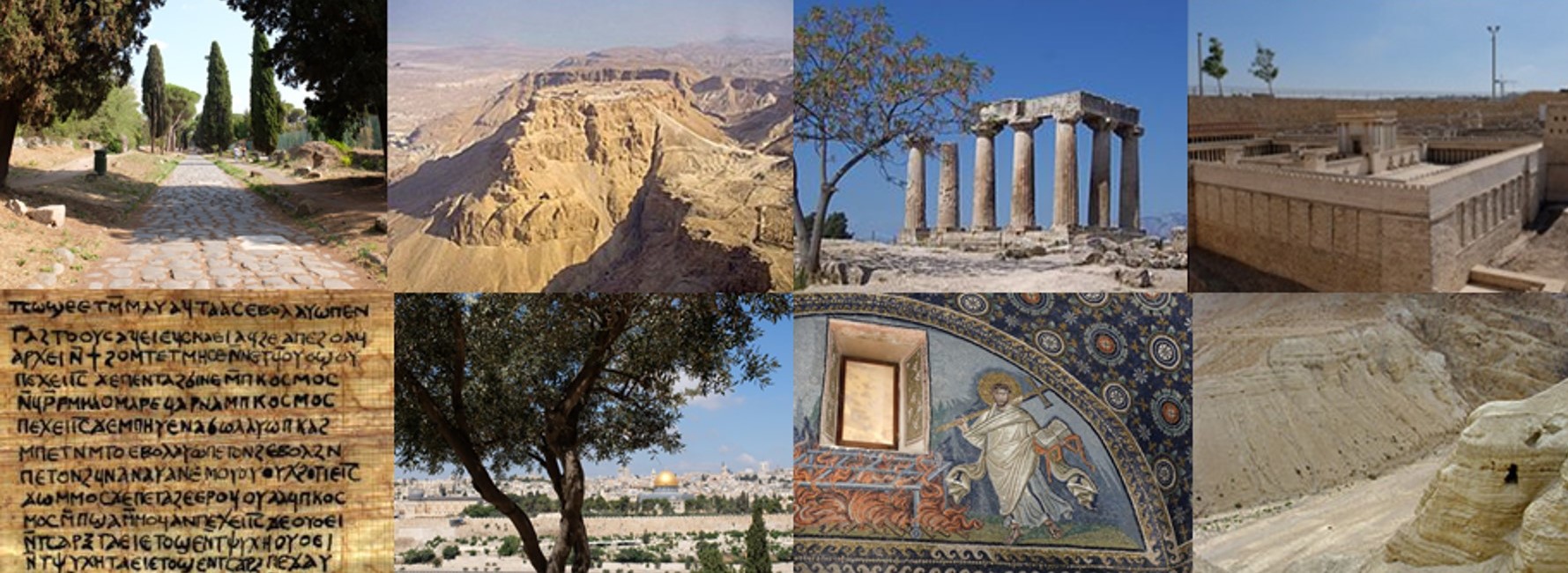Session 1: Book Review Panel
Janette H. Ok, Fuller Seminary, ‘Constructing Ethnic Identity in 1 Peter: Who You Are No Longer’
Panellists: Katy Hockey, University of Aberdeen, David Horrell, University of Exeter, and Noel Cheong, University of Oxford
Session 2
Joe Allen, University of Cambridge, ‘The Creating, Saving, and Instructing Word of God: Revisiting Logos Language in the Letter of James’
The relationship between λόγος language in the epistle of James and the letter’s soteriology has become one of the most contested aspects of the letter. At stake is the question of whether James resembles the soteriological patterns of other Christian writers, such as Paul, or whether he represents a ‘minority report’ in early Christianity. This paper seeks to advance this conversation by suggesting that James stands in a tradition of theological reflection on the ‘word of God’ as it is conceived in the Septuagint and early Judaism. This paper will begin by arguing that previous interpretations of the λόγος in James do not adequately explain its varied use in the epistle. I will then briefly survey the use of λόγος language in the Septuagint and Hellenistic Jewish literature. I will argue that this background best explains why James uses λόγος language in the context of creation, salvation, and moral formation. I will conclude with some of the implications of this argument for how we should understand James in relation to other early Christian soteriologies.
Jan Dochhorn, Durham University, ‘Towards Dating and Locating the Letter of Jude. A New Proposal Taken Over From Baroque Theology’
In his commentary on the New Testament, Hugo Grotius identified Jude, the last Judaeo-Christian Bishop of Jerusalem, as the author of the Letter of Jude. It makes sense to revitalize this idea – under new methodological conditions. In fact, the Letter of Jude can fairly well be understood as a reaction of Jude of Jerusalem against a crisis caused by »heresies« in Jerusalem which is also attested by Eusebius of Caesarea. The probably oldest commentary on the Letter of Jude, preserved by Cassiodor from the Hypotyposes of Clement of Alexandria, regards Jude as a reaction to the Carpocratians. This thesis is less misled and misleading than one may suspect as well.
Session 3: Joint Session with Ancient Judaism & Christianity Group
Michael Francis, The Catholic University of America, ‘Sin and Gradations of Sin in Hebrews, the Dead Sea Scrolls, and Philo of Alexandria’
The paper explores the idea of sin and gradations of sin in the Epistle to the Hebrews, and offers a comparative treatment of related ideas in the Dead Sea Scrolls and the works of Philo of Alexandria. The analysis of Hebrews centers on three concerns: first, the figuration of sin in relation to the author’s wider concerns and rhetorical strategy; second, the appropriation of a scriptural distinction between intentional and unintentional sin, based on the provisions of Priestly law; third, the phenomenon of a kind of sin that leaves the sinner decisively devoid of hope. The paper argues that there is a fundamental continuity of perspective between Hebrews and the relevant provisions of Priestly law, the latter characterized by certain tensions that prove both interpretive challenge and opportunity for the author of Hebrews and, variously, the authors of the Dead Sea Scrolls, and Philo. The paper thus contributes to ongoing consideration of (1) the register and dimensions of the criticism of Mosaic law in Hebrews, and (2) the most important conceptual backgrounds for studying Hebrews.
Payton Miller, University of Aberdeen,‘The Threat of Death in the Heavenly Cult: Justifying the Resurrected Body of Christ in Light of a Major Source of Impurity’
The Levitical cult considers death to be a major source of communicable impurity to high priests in Leviticus 21 and designates procedures for priests to avoid contact with corpses to preserve their holiness. Though the heavenly cult appears to be removed from earthly sources of contagion, the holiness of the heavenly high priest in the letter to the Hebrews is similarly threatened by death on account of his fleshly body. I will argue that death is a persistent threat to the heavenly cult through analyzing the nature of holiness in both cults, the use of Second Temple literature relevant to the Day of Atonement purification in Heb 9:11-14, and the necessity for heavenly spaces to be purified with “better” sacrifices in Heb 9:23. I will then argue that the continuing threat from corpse impurity in the heavenly cult serves to necessitate the resurrected flesh of Christ as high priest—given that the crucified Christ is still prone to death’s impurity and cannot enter the heavenly cult without transformation. I will conclude with how Christ’s resurrected flesh fulfills the necessity for the high priest’s body to be transformed flesh in heaven in consideration of requirements for the high priesthood and as a means to nullify the impurity of death in the heavenly cult in Hebrews.
Lily Tsai Su, University of Glasgow, ‘The Text in the Pastoral Epistles’
The use of earlier authoritative texts is remarkable in Second Temple Jewish writings. By citing or alluding to earlier authoritative texts, the authors of the Second Temple period were able to stress the continuity of earlier tradition in a new context. Such literary tradition was known to New Testament writers (the citation of Isa 7:14 in Matt 1:23, Deut 25:4 in 1 Cor 9:9 and 1 Tim 5:18, etc.). The reference to Jewish scriptures is explicitly noted by scribes in some New Testament manuscripts, such as diplai were used in Codex Alexandrinus and rubrication was used in Codex Claromontanus to mark out the quotation of Deut 25:4 in 1 Timothy 5:18. This paper investigates the citations of Jewish scriptures and allusions to the corpus of the Pauline Epistles in 1 Timothy as a case study for exploring the compositional and interpretive approach of the Pauline author. The use of earlier authoritative texts in the form of citations or allusions allows the author of 1 Timothy to draw from the Pauline tradition in a new context.

